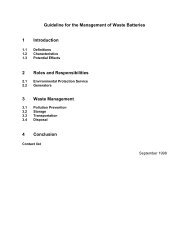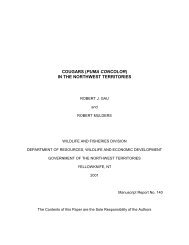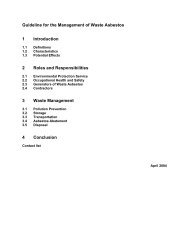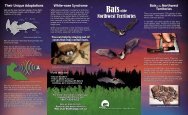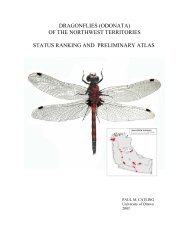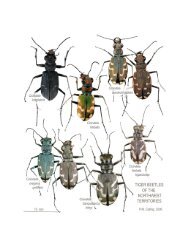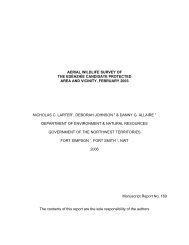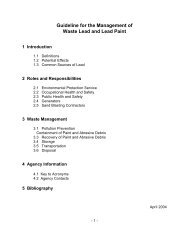Standard Operating Procedure (SOP) - Environment and Natural ...
Standard Operating Procedure (SOP) - Environment and Natural ...
Standard Operating Procedure (SOP) - Environment and Natural ...
- No tags were found...
Create successful ePaper yourself
Turn your PDF publications into a flip-book with our unique Google optimized e-Paper software.
<strong>St<strong>and</strong>ard</strong> <strong>Operating</strong> <strong>Procedure</strong> (<strong>SOP</strong>)<br />
Capture, H<strong>and</strong>ling & Release of Bears<br />
Wildlife Care Committee Primary Author: Dr. Marc Cattet Version 2 - 2011<br />
- This technique is typically employed in heavily wooded areas<br />
where remote drug delivery by helicopter is not possible.<br />
Recommendations:<br />
• Snare site selection should always take into account human use<br />
<strong>and</strong> activities in the trapping area with the intent of minimizing<br />
human presence around the snare site.<br />
• Access routes <strong>and</strong> snare sites must be clearly marked to prevent<br />
persons from inadvertently encountering a trapped bear or a bear<br />
in the vicinity of the site.<br />
• Snares must be prepared <strong>and</strong> set by experienced persons only.<br />
• A limited number of snare sites should be set at any one time to<br />
ensure that more bears are not captured in one day than can be<br />
effectively <strong>and</strong> safely h<strong>and</strong>led.<br />
• Snare sites must always be set with a clear line of sight to permit<br />
assessment from a safe distance.<br />
• When multiple snares are set at a single location individual snare<br />
locations should be marked for inspection from a distance (i.e.<br />
flagging tape at tree sites) <strong>and</strong> snares should be set far enough<br />
apart that two captured bears cannot get entangled.<br />
• Cable clamps should be used to ensure the anchor end of the<br />
snare is as short as possible<br />
• Cub stops should be put on snares to avoid catching small bears<br />
or large bears by only one or two toes.<br />
• Active snare sites must be inspected routinely at least once daily<br />
<strong>and</strong>, if possible, more frequently.<br />
The likelihood of serious injury to snared bears increases with the<br />
duration of restraint by snare. Flagging tape tied to the trap spring<br />
can simplify checking sites from the air. In addition, trap monitor<br />
transmitters may be attached to snares to assess active sites from<br />
the air. However, even with transmitters attached, it is still<br />
necessary to examine traps visually at least once daily because trap<br />
monitor transmitters may fail to perform in some cases. Deployment<br />
of electronic timers at snare sites can be used to record the duration<br />
of time that a trap has been sprung.<br />
• Placement of the snare on a bear <strong>and</strong> the possibility of other<br />
bears in the area must be assessed from a distance before<br />
approaching a snared bear closely.<br />
Assessment of the capture area for other bears may require a<br />
helicopter where tree cover is extensive.<br />
• Snared bears must be immobilized using low velocity remote<br />
drug delivery methods only, e.g., blowpipe, pistol, or rifle at low<br />
power setting.<br />
A pole syringe (jab-stick) may be used with small bears provided<br />
they are well restrained.<br />
13



